 When my career as a sales professional first launched, I distinctly remember how much I hated making sales calls. I don’t like to use the word, “hate,” but I’m just being really honest. I went out and purchased every book I could on sales and selling from Brian Tracy’s “The Psychology of Selling” to Jeffrey Gitomer’s “The Sales Bible.” I learned a lot from those two gentlemen and the information has served me well over the years. They gave me a great base of sales strategy and communication skills, but I always felt like something was missing.
When my career as a sales professional first launched, I distinctly remember how much I hated making sales calls. I don’t like to use the word, “hate,” but I’m just being really honest. I went out and purchased every book I could on sales and selling from Brian Tracy’s “The Psychology of Selling” to Jeffrey Gitomer’s “The Sales Bible.” I learned a lot from those two gentlemen and the information has served me well over the years. They gave me a great base of sales strategy and communication skills, but I always felt like something was missing.
And that thing that was missing was that no matter how much sales strategy I picked up, I still HATED picking up the phones.
I can hear you laughing. I know you can relate. Perhaps you felt that way the last time you decided to make calls?
And when I say, “decided” I mean you planned on doing them, but you didn’t actually do them.
It’s okay. It happens. If fact, it happens all of the time. Statistically, 50% of us only call our prospects once and then we really drop off after two calls.
Why is that, you ask?
Well, you guessed it. We don’t like to hear the word “no.” We are programmed to not like rejection. Our ego can’t take it.
And yet, here we are as sales professionals and entrepreneurs picking up the phone every day to get a “no.” In my opinion, sales professionals and entrepreneurs are some of the bravest people in the world of business. Yet, here we are, working away, wondering how in the heck we can close more sales. But wait, we already know the answer: We need to spend more time making more calls, getting more appointments and closing more sales.
Wrong!
The truth is you don’t actually need to spend more time making calls when you know how to make the calls and focus on your top 20%. In fact, you can make fewer calls and make more money. Really!
But, you have to do it. You have to pick up the phone.
So, what should you do when you don’t want to make calls?
I am pleased to share five sales strategies with you to make more calls, even when you don’t want to.
1. Go golfing or go to the spa. This strategy might seem to be the most counter intuitive of all, but you need to get out of your head. When you really don’t want to make calls, it’s usually because you have fear around picking up the phone. Plus, when you’re stuck, you typically don’t have an intentional sales plan set, which I will talk more about below. They key is to get out into the world and not force yourself to make calls when you don’t want to. If you force yourself to make calls and you don’t feel good about it, I can guarantee you that you will get a bunch of “no’s.”
2. Realize that you don’t have to make a lot of calls. When I first started out in sales, I was trained and coached to make 100 calls every day before I could go home. I had to make tick marks on a sheet of paper to show my manager that I had completed my tasks for the day before I could go home. Guess what? It didn’t work very well. So I quickly changed my process to making higher quality calls but less calls. I created a top 20 list, which was made up of my top 20% of clients, and I called that list until I either got a “yes,” “no,” or a “next step.” That’s it! Suddenly my appointment-setting average went way up. So stop thinking you need to spend all day on the phone. You don’t. In Sales Camp I show my clients how many appointments you can set in 30 minutes. The record is still 11 appointments, which represented $70,000 in net new opportunities. Don’t think quantity. Think quality. It’s not a numbers game.
3. Make the easiest calls first. One of my clients once said that he was bringing his “Chicken List” to Sales Camp. I said, “What the heck is a Chicken List?” He said, “It’s the prospects I am most afraid to call!” Oh! That sounded really painful to me because he didn’t have the correct training, strategy or skill set yet to focus on his toughest clients. I suggested that he start with his easiest prospects first (within his top 20) and work his way through the list. Once he closed a few appointments with the easiest ones first, he was well poised to set appointments with the more difficult ones, those on his “Chicken List.”
4. Review your sales stretch goal and figure out how many appointments you really need. The real reason you don’t have to make tons of calls is because you don’t need tons of appointments. When your calling script is clear and solid and you know how to ask for the appointment, you can simply make fewer calls. Make sense? So right now I want you to reverse engineer your numbers. What is your sales stretch goal? On average, how many sales do you need to reach that goal? Let’s imagine that your sales closing ratio is 50% (if you don’t know), meaning you close half of the prospects you meet with. Based on that, how many appointments do you need per month? For example, let’s say that Jenny’s stretch goal is $10,000 per month (easy numbers) and her average sale is $1,000. That means that Jenny needs to close 10 sales every month to meet her goal. If her closing ratio is 50%, then she’ll need 20 appointments with her Top 20% to reach her goal. Got it? Now, take a moment and do that exercise for yourself.
5. Create an intentional schedule that shows you how to make the least amount of calls possible with the greatest results. Once you know how many appointments you need, it’s time to get your 30 minutes (or however much time you decide you need) of calling on the schedule. At first, you might not be sure exactly how many calls you need to make to get the amount of appointments you need, so you need to track your activity. You will soon see how many calls, on average, it takes you to get one appointment. Then you can reverse engineer the amount of time you really need. The better you get at setting appointments with your clients, the easier it will be. During Sales Camp, most attendees can schedule at least 1-2 appointments per calling session of 30 minutes. In my experience, the more prepared the Sales Campers are (both with their calling list and their scripts), the more appointments they get. Makes sense, right?
You don’t want to make sales calls. I get it. But to be successful in your sales career or in your business, it’s a necessary part of the job. The great news is that you can probably begin making fewer calls. To reach your sales stretch goals, you actually need to practice and build the appointment-setting muscle. Contrary to popular belief, selling is a skill. A skill is the intersection of your natural abilities and knowledge. Think of it as a muscle you are building. The stronger the muscle, the better the results. Now, go get some results (well, maybe go to the spa first)!





